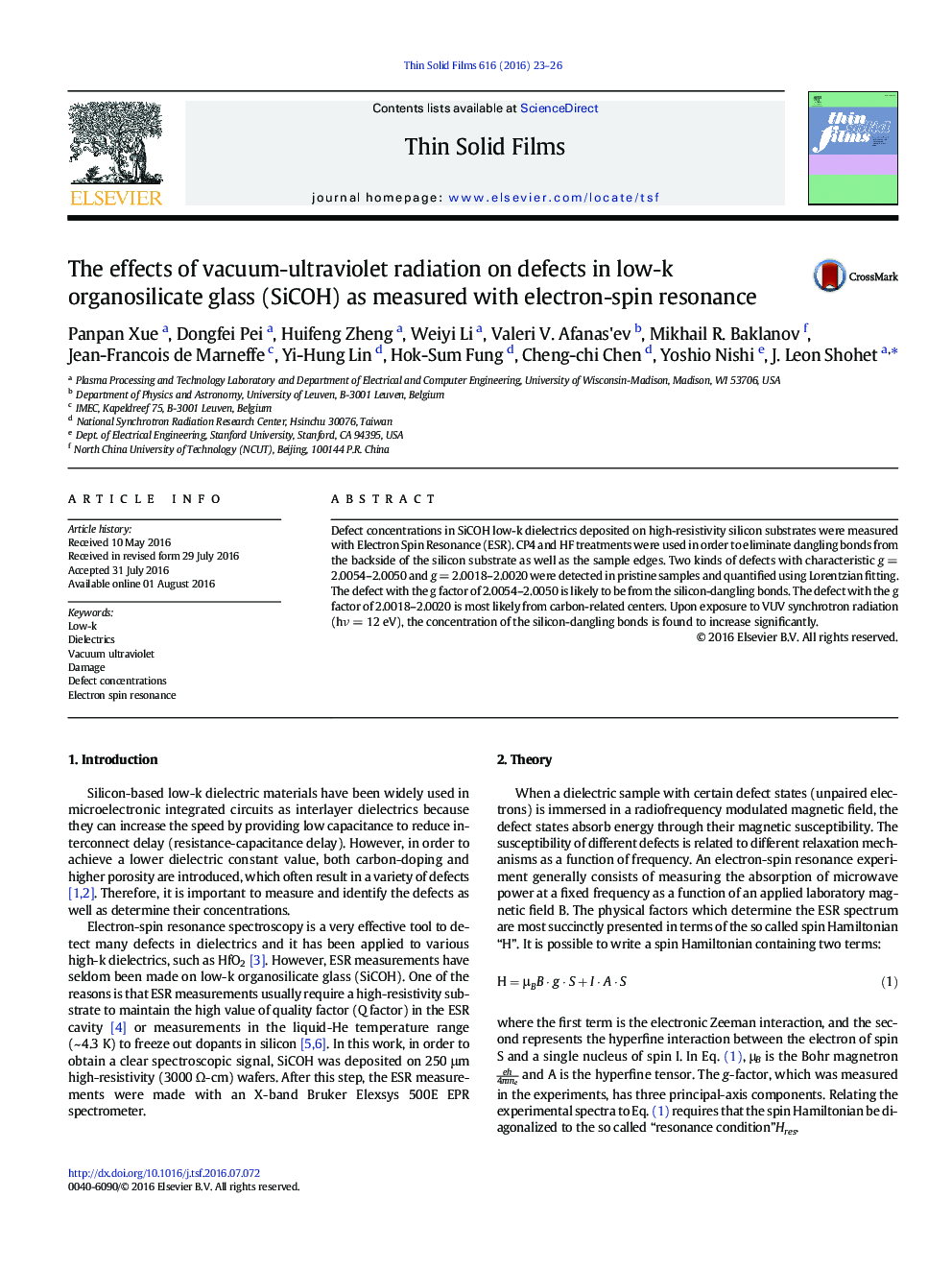| Article ID | Journal | Published Year | Pages | File Type |
|---|---|---|---|---|
| 1663723 | Thin Solid Films | 2016 | 4 Pages |
•Minimizes/eliminates error in electron-spin measurements low-k dielectric films•Determines effects of vacuum-ultraviolet radiation on defects in low-k dielectrics•Shows how the radiation affects mechanical and electrical properties•Suggests methods to mitigate damage
Defect concentrations in SiCOH low-k dielectrics deposited on high-resistivity silicon substrates were measured with Electron Spin Resonance (ESR). CP4 and HF treatments were used in order to eliminate dangling bonds from the backside of the silicon substrate as well as the sample edges. Two kinds of defects with characteristic g = 2.0054–2.0050 and g = 2.0018–2.0020 were detected in pristine samples and quantified using Lorentzian fitting. The defect with the g factor of 2.0054–2.0050 is likely to be from the silicon-dangling bonds. The defect with the g factor of 2.0018–2.0020 is most likely from carbon-related centers. Upon exposure to VUV synchrotron radiation (hν = 12 eV), the concentration of the silicon-dangling bonds is found to increase significantly.
